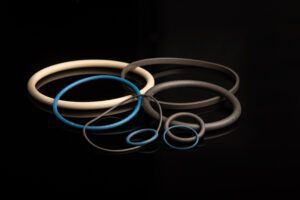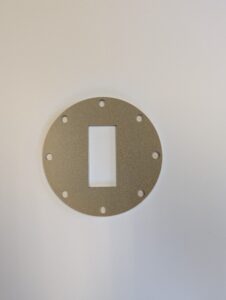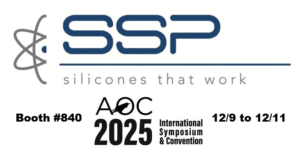Silicone rubber keypad EMI shielding with nickel-graphite is less expensive than with silver-filled elastomers.
Silicone rubber keypads are used in everything from smartphones and electronic devices to household appliances and remote controls. Within a rubber keypad, conductive carbon components known as “pills” are molded into key actuators. These millimeter-sized parts provide alternative to dome switches and are made from conductive silicones that contain carbon. Typically, conductive carbon pills are round, rectangular, or oval in shape.
Carbon-Filled Silicones vs. Nickel-Graphite Silicones for Silicone Rubber Keypad EMI Shielding
During the current supply chain crisis, the carbon-filled silicones for these keyboard components are in short supply. When a manufacturer of silicone rubber keypads wanted to find an alternative material, Specialty Silicone Products (SSP) suggested nickel-graphite silicones, electrically-conductive elastomers that are highly conductive on their surface, providing great contact resistance. The contact resistance is key in this particular keypad application.
In working with the keypad manufacturer, SSP identified two 65-durometer nickel-graphite silicones that could meet the application’s requirements. Both are more conductive than carbon-filled silicones and provide excellent supply options as they are continuous roll stock grades. Because SSP’s EMI/RFI elastomers are silicone-based, they also bond well to silicone rubber keypads and support overmolding. Plus, SSP’s nickel-graphite silicones support cost-effective fabrication and are available without long lead times.
Replacing Carbon Pills in Rubber Keypads
The first nickel-graphite silicone, SSP502-65, supports smaller, thinner, lighter-weight designs and is supplied as both compression-molded sheet stock and continuous rolls. The second material, SSP502-65-CR, is produced in continuous rolls and comes in thickness from 0.015” to 0.062”. This nickel-graphite silicone is reinforced and provides strong electrical connectivity for instant keyboard connections. With both products, the continuous rolls have tight tolerances and come in widths from 3 to 15 inches.
SSP makes nickel-graphite silicones and other EMI/RFI shielding elastomers at its ISO 9001:2015 certified manufacturing facility in Ballston Spa, New York (USA). These conductive silicones can use various fill materials, but nickel-graphite provides silver-like conductivity without the price volatility associated with precious metals. With continuous rolls, SSP can produce the equivalent of 15” x 20” molded sheets in one day – and with lead times as short as one week.
Strengthen Your Supply Chain with Silicone Rubber Keypad EMI Shielding from SSP
For the manufacturer of silicone rubber keypads, SSP-502-65-CR was the right choice. During this time of supply chain constraints, SSP also welcomes other inquiries. To request a quote or to discuss your application, please contact us.




